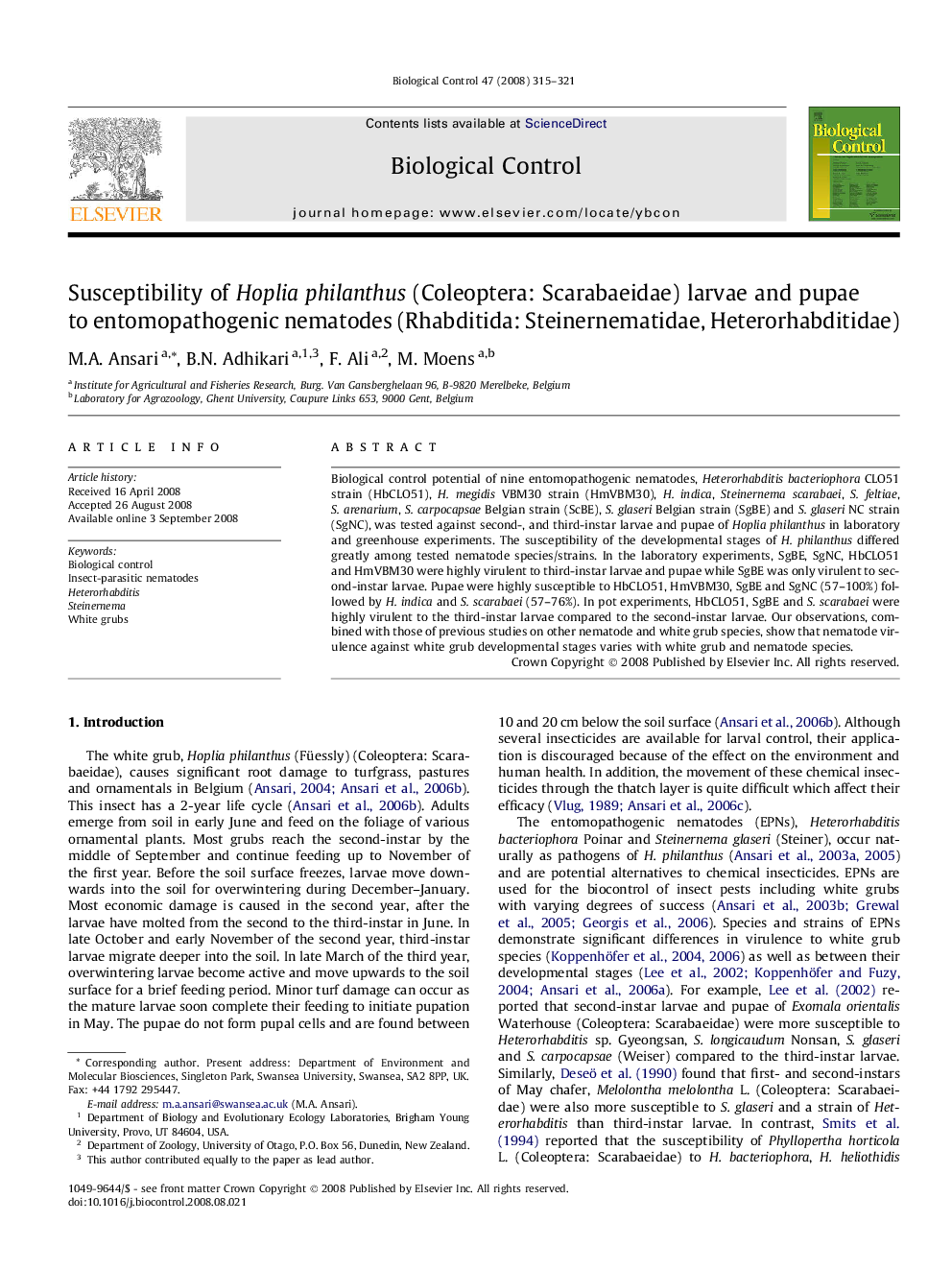| Article ID | Journal | Published Year | Pages | File Type |
|---|---|---|---|---|
| 4504791 | Biological Control | 2008 | 7 Pages |
Abstract
Biological control potential of nine entomopathogenic nematodes, Heterorhabditis bacteriophora CLO51 strain (HbCLO51), H. megidis VBM30 strain (HmVBM30), H. indica, Steinernema scarabaei, S. feltiae, S. arenarium, S. carpocapsae Belgian strain (ScBE), S. glaseri Belgian strain (SgBE) and S. glaseri NC strain (SgNC), was tested against second-, and third-instar larvae and pupae of Hoplia philanthus in laboratory and greenhouse experiments. The susceptibility of the developmental stages of H. philanthus differed greatly among tested nematode species/strains. In the laboratory experiments, SgBE, SgNC, HbCLO51 and HmVBM30 were highly virulent to third-instar larvae and pupae while SgBE was only virulent to second-instar larvae. Pupae were highly susceptible to HbCLO51, HmVBM30, SgBE and SgNC (57-100%) followed by H. indica and S. scarabaei (57-76%). In pot experiments, HbCLO51, SgBE and S. scarabaei were highly virulent to the third-instar larvae compared to the second-instar larvae. Our observations, combined with those of previous studies on other nematode and white grub species, show that nematode virulence against white grub developmental stages varies with white grub and nematode species.
Related Topics
Life Sciences
Agricultural and Biological Sciences
Agronomy and Crop Science
Authors
M.A. Ansari, B.N. Adhikari, F. Ali, M. Moens,
